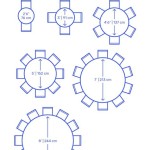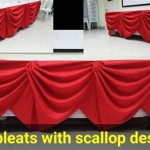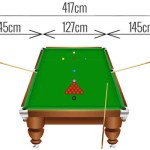Refinish Dining Table Near Me: A Comprehensive Guide
The dining table serves as a central gathering point in many homes. Over time, the finish on a dining table can become worn, scratched, or damaged due to regular use. Refinishing a dining table is a viable option to restore its original beauty and extend its lifespan, rather than replacing it entirely. Finding a reputable service for "Refinish Dining Table Near Me" involves careful consideration of various factors, including the type of finish, the extent of damage, and the experience and expertise of the refinishing professionals available.
This article provides a comprehensive guide to understanding the process of refinishing a dining table, the factors influencing the cost, and how to locate qualified refinishers in your local area. It further explores the importance of proper preparation and the different types of finishes commonly used. By understanding these aspects, individuals can make informed decisions about restoring their dining tables to their former glory.
Understanding the Refinishing Process
The refinishing process typically involves several key steps, each crucial for achieving a durable and aesthetically pleasing result. These steps include stripping the old finish, sanding the wood surface, staining, and applying a new protective finish. The specific methods and materials employed can vary depending on the existing finish, the type of wood, and the desired outcome.
The first step is often the removal of the existing finish. This can be achieved through chemical stripping, sanding, or a combination of both. Chemical strippers are solvents that soften the old finish, allowing it to be scraped away. This method is particularly useful for intricate details or when the existing finish is thick and difficult to sand. However, it requires careful handling due to the potentially hazardous nature of the chemicals involved. Sanding, on the other hand, involves using abrasive materials to gradually remove the old finish. This method requires skill and patience to avoid damaging the underlying wood.
Once the old finish is removed, the wood surface is thoroughly sanded to create a smooth and even base for the new finish. Different grits of sandpaper are used, starting with coarser grits to remove imperfections and gradually moving to finer grits to refine the surface. The sanding process removes scratches, dents, and other surface irregularities, ensuring a uniform and professional-looking result. Careful attention is paid to edges and corners to avoid rounding them off or damaging the wood.
Following sanding, the table may be stained to achieve the desired color. Staining involves applying a pigment to the wood to enhance its natural grain and character. A variety of stain colors are available, ranging from light and natural tones to dark and rich hues. The choice of stain color depends on personal preference and the overall aesthetic of the room. Before staining the entire table, it is recommended to test the stain on an inconspicuous area to ensure that the desired color is achieved. Multiple coats of stain may be applied to achieve a deeper or richer color.
The final step in the refinishing process is the application of a protective finish. The finish protects the wood from moisture, scratches, and other damage, while also enhancing its appearance. Common types of finishes include polyurethane, lacquer, varnish, and oil-based finishes. Polyurethane is a durable and water-resistant finish that is suitable for high-traffic areas. Lacquer is a fast-drying finish that provides a smooth and glossy surface. Varnish is a traditional finish that offers good protection and a warm, amber tone. Oil-based finishes penetrate the wood, providing a natural look and feel. The choice of finish depends on the desired level of protection, the appearance, and the ease of application.
Factors Affecting the Cost of Refinishing
The cost of refinishing a dining table can vary depending on several factors. These include the size and complexity of the table, the type of wood, the extent of damage, the type of finish desired, and the labor costs associated with the refinishing service. Understanding these factors can help individuals obtain accurate estimates and make informed decisions about their refinishing project.
The size of the dining table is a significant factor in determining the cost of refinishing. Larger tables require more materials and labor, resulting in a higher overall cost. The complexity of the table's design also plays a role. Tables with intricate carvings, detailed moldings, or multiple leaves can be more challenging to refinish, requiring more time and skill. These complexities can increase the labor costs associated with the project.
The type of wood used to construct the dining table can also affect the cost of refinishing. Hardwoods, such as oak, maple, and cherry, are generally more durable and easier to refinish than softwoods, such as pine and fir. Softwoods tend to absorb stain unevenly, requiring more preparation and skill to achieve a uniform finish. Exotic woods may also require specialized techniques and materials, which can increase the cost of refinishing.
The extent of damage to the table's existing finish is another important factor. Tables with minor scratches or blemishes may require only light sanding and a new coat of finish, while tables with extensive damage, such as deep scratches, dents, or water stains, may require more extensive repairs and preparation. The cost of repairing these damages can add to the overall cost of refinishing.
The type of finish desired also influences the cost of refinishing. Some finishes, such as polyurethane and lacquer, are relatively inexpensive and easy to apply, while others, such as varnish and oil-based finishes, are more expensive and require more specialized application techniques. The choice of finish depends on personal preference, the desired level of protection, and the overall aesthetic of the room.
Labor costs are a significant component of the overall cost of refinishing. Refinishing professionals typically charge an hourly rate or a flat fee for their services. The hourly rate can vary depending on the experience and expertise of the refinisher, as well as the location of the service. It is advisable to obtain multiple estimates from different refinishers to compare prices and services before making a decision.
Finding Qualified Refinishers Near You
Locating qualified refinishers involves several steps, starting with online searches using specific keywords. Online directories and review platforms offer valuable resources for identifying reputable professionals in your area. Cross-referencing this information with local referrals and checking for proper licensing and insurance are essential for ensuring a satisfactory outcome.
The first step involves conducting online searches using keywords such as "Refinish Dining Table Near Me," "Furniture Refinishing Services," or "Wood Furniture Restoration." These searches can yield a list of potential refinishers in your local area. Online directories, such as Yelp and Angie's List, can provide additional information, including customer reviews and ratings. These reviews can offer valuable insights into the quality of work and customer service provided by different refinishers.
Local referrals from friends, family, and neighbors can also be a valuable source of information. Individuals who have previously used refinishing services may be able to recommend reliable and experienced professionals. Personal recommendations can provide a level of trust and confidence that is difficult to obtain through online searches alone.
Once a list of potential refinishers has been compiled, it is important to check their credentials and qualifications. Ensure that the refinisher is licensed and insured to operate in your area. Licensing and insurance provide protection against potential liabilities and ensure that the refinisher meets certain standards of quality and professionalism. Request to see examples of their previous work to assess their skill and expertise. Reputable refinishers should be willing to provide references and answer any questions you may have about their services.
It is also important to obtain written estimates from multiple refinishers before making a decision. The estimate should include a detailed breakdown of the costs involved, including materials, labor, and any additional charges. Compare the estimates carefully, paying attention to the scope of work included and the quality of materials used. Be wary of estimates that seem too good to be true, as they may indicate substandard work or hidden fees.
Finally, consider the experience and reputation of the refinisher. Choose a refinisher who has a proven track record of providing high-quality work and excellent customer service. A refinisher with years of experience is more likely to have the knowledge and skills necessary to handle a variety of refinishing projects. Check online reviews and testimonials to get a sense of the refinisher's reputation and customer satisfaction levels.

Dining Room Table Refinishing Services Antique Furniture Restoration By Rafael Oganyan Serving Boston Surrounding Areas

Refinishing A Dining Table Diy Beautify Creating Beauty At Home

How To Refinish A Dining Table Without Stripping The Original Coat

How To Refinish A Worn Out Dining Table

How To Refinish A Table Sand And Sisal

How To Refinish A Dining Table Shades Of Blue Interiors

Dining Table Makeover How To Refinish A

Kitchen Table Flip The Rural Legend

How To Refinish Furniture Into A Beautiful Wood Dining Table Sunnyside Home

21 Table Makeover Ideas On A Budget Hometalk
Related Posts








